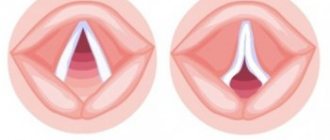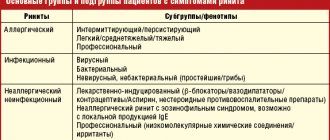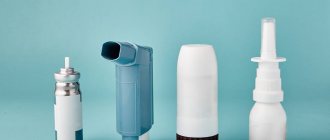Existing varieties
Burns of the nasal mucosa are usually classified according to the type of irritant substance that led to its formation. Burns are classified according to this feature:
The first are associated with direct exposure to high temperature on the nasal mucosa. In this case, irritant substances can be: hot air, open fire, water vapor.
The second are associated with direct contact of the nasal mucosa and the active chemical. In this case, the irritants may be alkali, alcohol or acid.
Noted symptoms
The symptoms characterizing thermal and chemical burns of the nasal mucosa are very similar. But depending on the duration and intensity of the negative impact, the damage will have a different nature.
So, the following symptoms can be identified:
- Redness and swelling of the nasal mucosa. Occurs with short-term exposure to an irritant. This is the first degree.
- Formation of fluid-filled blisters on the nasal mucosa. When the integrity of the blisters is violated, erosions of the mucous membrane are formed - painful surface defects of the membrane. Such signs are typical for exposure of medium duration and intensity. This is the second degree.
- Necrosis (necrosis) of mucous tissues located in the nasal cavity. The surface of the mucous membrane becomes ash-gray. Such processes indicate the most severe type of burns. This is the third degree.
Signs of damage to the inner lining of the nose
Regardless of the degree of injury, the first symptom that characterizes a chemical or thermal burn of the nasal mucosa will be redness and a burning sensation. The affected area will begin to swell, there will be a feeling of dry passages, blisters, and tissue will begin to die.
As the affected area increases, the symptoms become more severe and the pain syndrome intensifies. The following signs are identified at different stages of injury:
- in grade 1 (usually occurs if hot steam penetrates the nasal sinuses for a short time), a slight burn of the nasal mucosa is noted, for which virtually no treatment is required. Redness and swelling are the only manifestations;
- Grade 2 is characterized by significant injuries that cause severe pain. Painful signs are relieved with painkillers (lidocaine). At this stage, blisters containing fluid form. They should not be opened so as not to injure the affected tissues;
- at grade 3, damaged areas of the mucosa die and are not restored. The area takes on an ashy hue, indicating necrosis.
First aid to the victim
So what to do if you burn the nasal mucosa?
First of all, don't panic. The effectiveness and duration of subsequent treatment and recovery period depend on correctly provided first aid.
The correct algorithm for providing first aid for such a burn is as follows:
- First of all, it is necessary to stop contact of the nasal mucosa and the irritant substance.
- You should be extremely careful, but at the same time thoroughly rinse the nasal cavity with clean, cool water.
- If the victim experiences unbearable pain, it is necessary to insert cotton or gauze turundas (tampons) moistened with an anesthetic drug (for example, Novocaine) into each nasal passage.
- Contact an otolaryngologist as soon as possible. If possible, you should have with you the irritant substance that caused the burn.
In the case of a chemical burn of the nasal mucosa, it is necessary to know medicinal solutions that neutralize the effect of a specific irritant substance:
- for acid it is a soap solution;
- for alcohol it is a saline solution;
- for alkali - this is a solution of vinegar (0.5%).
Symptoms
The symptoms of a nasal burn depend on the extent of tissue damage. But even minor damage can be characterized by severe discomfort. The clinical picture of a nasal burn consists of the following signs:
- pain;
- local changes;
- disturbances in the general condition of the body.
If there is a burn to the outer surface of the nose, pain is the first symptom. Characteristics of pain:
- by localization - at the point of contact with the pathogenic factor;
- in terms of distribution – objectively there is no irradiation;
- by nature – burning;
- in terms of intensity - almost always pronounced;
- by occurrence - almost always develop from the first second of exposure to the causative factor (flame, acid, and so on). In case of exposure to intense solar radiation, pain may not occur at the moment of injury, but after some time; this also applies to a burn of the nose caused by exposure to ionizing radiation.
The degree of development of local changes depends on how long the contact of the nasal tissues with the damaging agent was.
If there is short-term contact with too hot objects and liquids, as well as exposure to direct sunlight, changes in nasal tissue are observed such as:
- redness;
- swelling.
With prolonged contact with these same factors, blisters with cloudy liquid contents form.
If there is contact with acids or alkalis, the following are observed:
- redness;
- tissue swelling;
- rapidly developing tissue necrosis - dark brown or black areas form in their place;
- after tissue necrosis - their rejection and deformation of the nose.
If there is a superficial burn of the mucous membranes of the nose, then the following symptoms are characteristic:
- a feeling of severe burning in the nose;
- feeling of dryness there;
- worsening nasal breathing;
- nasal congestion;
- deterioration of smell.
If the burn of the mucous membranes lining the nasal cavities is severe, then the signs are as follows:
- unbearable acute pain;
- worsening nasal breathing;
- bloody discharge;
- after some time, a moderate deformation of the nasal bridge occurs.
Violations of the general condition are observed in the case of a severe burn, when not only the nose is involved, but also other areas of the soft tissues of the maxillofacial area. This disorder is manifested by intoxication syndrome. Its signs are as follows:
- fever – simultaneously observed hyperthermia (increased body temperature) and chills. Body temperature may rise to 38.0-38.5 degrees Celsius;
- headache;
- severe weakness;
- lethargy;
- nausea (sometimes the urge ends in vomiting, which does not bring relief).
Burn treatment
Treatment methods are chosen directly by the ENT doctor. At the same time, he is based on the results of the inspection and the severity of the injuries received.
Treatment of thermal burns
For the first degree of thermal burn, the use of medications is not required. The victim carries out simple recovery measures on his own at home. It is necessary to systematically rinse the nasal cavity with cool water, saline solution or its analogues (Marimer, Salin, Physiomer).
The second degree of thermal burn requires an integrated approach. In addition to rinsing, painkillers (Lidocaine) and restorative ointments (Propolis) are used.
The third degree is treated exclusively in an inpatient hospital setting. Rehabilitation therapy includes antibiotic drugs and various specialized ointments (Actovegin).
Treatment of a chemical burn
Most often, with a fairly serious degree of damage to the nasal membrane, all therapeutic and therapeutic measures are carried out in a hospital setting.
Specific medications and treatment methods are prescribed exclusively by the attending physician.
During the treatment course, painkillers and antiseptic drugs can be used. Regular hygiene procedures are carried out to remove crusts from the affected nasal cavity.
Treatment
After consultation with the attending ENT doctor, the patient is prescribed a group of medications; depending on the type of injury received, the list of medications may be supplemented with ointments and sprays.
For first-degree lesions, treatment can be carried out at home, following the doctor’s recommendations and taking the list of medications specified in the prescription. You should also perform washing procedures with special solutions (Salin, Physiomer).
Second degree burns are treated using analgesics, these can be either ointments or aerosols.
Injuries of the third type of severity are treated under the strict supervision of specialists in a hospital setting. Powerful steroid drugs (antibiotics), regenerative ointments and creams are used as medications.
During treatment procedures, crusts and scabs that impede breathing are removed from the nasal mucosa, and tampons soaked in restorative preparations are used to avoid sticking of the septal walls.
If things are really bad and the victim ends up in the hospital, then he only needs an ENT doctor - a specialist who deals with problems of the nose, throat and ears. The doctor conducts an examination, collects anamnesis and assesses the degree of the burn, after which he makes a conclusion and also draws up a treatment plan.
Treatment of thermal burns
Depending on the degree, treatment should be as follows:
- I degree thermal burn is the simplest and can be treated even without the use of medications. The victim can independently follow medical recommendations for restoring the nasal mucosa at home. To do this, he must regularly rinse his nostrils with running water, saline solution or its close analogues.
- Stage II is no longer so harmless, and forces the use of an integrated approach. In addition to rinsing, painkillers (lidocaine, novocaine) are used, as well as ointments to accelerate tissue regeneration (propolis).
- III degree requires hospitalization in a hospital and stay under the supervision of doctors. Rehabilitation therapy consists of the use of antibacterial drugs and various types of anti-burn ointments.
Treatment of a chemical burn
Chemical burns often provoke severe burns, so all patients must be sent to a hospital for treatment. What drugs to use and how long the patient will stay in the hospital is decided only by the attending physician.
During therapeutic measures, anesthetics and antiseptics can be used. The patient is prescribed systematic hygiene procedures (removal of crusts from the affected nasal passage).
Treatment methods in each specific case are determined directly by the ENT doctor. And when choosing what to treat and the treatment plan, he is based on the severity of the injuries received and the results of the examination.
Thermal burn
The first degree of thermal burn does not involve the use of medications. The victim independently carries out simple recovery measures.
READ MORE ABOUT: How to diagnose and treat arthritis during pregnancy
He needs to systematically rinse the nasal cavity with saline solution, cool water or analogues of saline solution (Salin, Marimer, Physiomer).
In the case of a second degree thermal burn, it is necessary to resort to an integrated approach. In addition to rinsing, painkillers (such as Lidocaine) and restorative ointments (Propolis) are used.
In the third degree of damage, recovery takes place exclusively in a hospital setting. Rehabilitation therapy includes various specialized ointments (for example, Actovegin) and antibiotic drugs.
Chemical burn
Most often, in case of sufficiently serious damage to the nasal membrane, all therapeutic and therapeutic measures take place in a hospital setting.
Specific treatment methods and medications are prescribed exclusively by the attending physician.
The treatment course includes the use of antiseptic and painkillers. Also, in order to remove crusts from the affected nasal cavity, special hygiene procedures are regularly carried out.
Restorative procedures
If the damage was not very severe, then the victims have the opportunity to restore the nasal mucosa on their own, at home.
In addition to daily rinsing of the nasal cavity with saline solutions, anti-puffiness and moisturizing medications are often used, for example, Pinosol or Delufen.
Therapeutic tactics are determined by the type and degree of damage. A burn to the nasal mucosa requires first aid and further qualified therapy.
First aid
Emergency measures for burns are provided in the form of self- and mutual assistance. First of all, you should stop exposure to the damaging factor - get out of the smoke-filled area, hold your breath, cover your nose and face with your hands, a scarf, etc.
The mucous membrane is washed with running water, removing possible contaminants (for example, ash particles) and chemical residues.
Phosphorus burns require removing pieces of it with tweezers. If slaked lime gets into your nose, remove it with a cotton swab, and in no case should you rinse the mucous membrane with water (this is an exception).
And for thermal burns, it is additionally recommended to treat the area with a weak solution of potassium permanganate (potassium permanganate).
Chemical burns require a more differentiated approach to first aid. Prehospital treatment includes the following activities:
- Rinse with baking soda solution (for acid burns).
- Neutralization with acetic or citric acids (for burns with alkali).
- Copper sulfate lotion (for phosphorus burns).
In addition to the above, the nasal cavity is loosely tamponed with turundas moistened with local anesthetics (Novocaine, Lidocaine). If necessary, a painkiller is taken.
First aid for burns of the nasal mucosa should be carried out immediately after an adverse effect, thereby minimizing the amount of damage.
Therapy
Further treatment is carried out by a qualified specialist. The doctor will conduct an examination, assessing the degree of the burn, and prescribe the necessary medications. The list of drugs used includes:
- Antibacterial (Isofra, Levomekol, Argosulfan, syntomycin ointment).
- Anti-inflammatory and decongestant (Dexamethasone).
- Antihistamines (Suprastin, Tavegil).
- Saline solutions (Aqualor, Marimer).
- Sea buckthorn oil.
MORE ABOUT: How to treat joints at home
Severe burns require inpatient rather than outpatient treatment, when the patient is given intensive care and is under the supervision of a physician. But in any case, qualified assistance should be provided as early as possible to avoid possible complications.
Burns of the nasal mucosa can be thermal or chemical. The latter have certain features of the clinical picture and medical care.
In every situation, a doctor’s intervention is required, because only a specialist will determine how the burn should be treated to quickly restore the mucous membrane.
Burns of the nasal mucosa and its treatment
This injury can be caused by exposure of the inside of the nose to too hot air, steam, or toxic substances formed during combustion. Burns to the nasal mucosa occur not only in emergency situations such as fires and explosions, but also when inhalation is performed incorrectly. You can help yourself or another person in the event of such an injury by knowing its main signs.
The content of the article
The first sign of damage to the nasal mucosa is redness and swelling. Unfortunately, few people provide proper treatment for minor burns, and this leads to complications. However, more severe degrees of burn cannot be ignored, since they are characterized by:
- increased dryness in the nose;
- the appearance of bubbles with clear liquid;
- erosion formation;
- necrosis of the epithelium (in this case the tissues become gray).
The stronger the impact on the mucous membrane, the more severe the degree of damage. Thus, with complex injuries, tissue necrosis and gradual rejection occur.
To prevent injury, you should avoid the factors that lead to it. You can burn the mucous membrane by thermal exposure (by inhaling hot air, steam or smoke at the site of the fire). A chemical burn to the nasal mucosa occurs as a result of the influence of chemicals - alcohol, acid or alkali. People most often suffer from inhaling ammonia, ammonia, and bleach.
Sometimes people get trauma to the mucous membrane due to inexperience and due to excessive efforts to quickly cure themselves with quartz if they have sinusitis or another ENT disease. Having “treated” himself using quartz for several minutes, a person is surprised how the mucous membrane could be burned during the procedure. As one of the patients reports, during quartzing she literally burned the nasal mucosa and realized this within 10 minutes: severe itching in her nose began to bother her and even tears appeared. The quartz method is indeed being introduced into the main treatment, since in case of ENT disease it can relieve pain and reduce inflammation. But this procedure is carried out only as prescribed by a doctor and with strict adherence to the time of exposure to quartz. In addition, before quartzing, the mucous membrane must be slightly lubricated with oil or another sunscreen, and the procedure time must be increased gradually, but not more than three minutes.
With any degree of damage to the mucosa, there is a risk of infection, the development of complications on this basis, and treatment becomes longer. Timely first aid plays a big role in this.
First aid
Timely first aid will help avoid unpleasant complications and speed up further treatment.
Necessary measures for thermal burns:
A highly qualified doctor knows how to treat a burn of one type or another and will prescribe the appropriate treatment.
Assistance for chemical injury:
The tactics coincide with the above methods, with the exception of chemical burns of the nasal mucosa obtained by combining aluminum and lime. In this case, it is necessary to rinse the cavity with vegetable oil, since water will only enhance the active reaction of the reagents.
Acid burns are neutralized with alkalis (soap or soda solution), and alkaline burns with acid (vinegar, citric). Alcohol damage is washed with saline solution or plain water.
To begin with, assistance should begin with eliminating the impact of the traumatic factor, and washing the affected areas with a certain method and solution, depending on the type and nature of the injury.
You need to act immediately after receiving a burn. The result and duration of his treatment will depend on how the victim behaves in an emergency situation. In order not to fall into a state of hysteria, you need to remember a few simple rules:
- Eliminate the irritating factor.
- Rinse your nasal passages immediately. For thermal burns, it is advisable to rinse with cool water, with extreme caution and trepidation. You should allocate at least 10-15 minutes for this procedure. Burns with acids can be neutralized with a weak solution of soda, and burns with alkalis can be neutralized with weak solutions of vinegar or citric acid. After getting quicklime into your nose, it must be treated with vegetable oil, as it reacts with water. Alcohol burns should be washed with saline solution.
- If the victim complains of severe pain, he can be given an anesthetic, but a faster effect can be achieved from the local influence of anesthetics - insert a cotton swab soaked in lidocaine or novocaine into the nostrils.
So what to do if you receive a burn to the nasal mucosa?
If a person receives a burn from contact with chemical reagents, the algorithm of actions is as follows:
How and with what you can help
In case of a burn to the nose, something can be done after it becomes clear what exactly caused the injury. So, in case of a thermal burn, you need to wash the burned area with soapy water, remove any dirt that has fallen on the wound from the surface, being careful not to further injure the tissue. It is also recommended to treat the burn with a slightly pink solution of potassium permanganate.
It is somewhat more difficult to provide assistance to a victim if the mucous membrane has been exposed to a chemical substance, since the harmful effects of each of them are eliminated in a special way. Neutralized:
- acid - soap solution, 0.1% ammonia or 2% baking soda solution;
- alkali - 1% solution of citric, boric, acetic acid;
- alcohol - saline solution.
If the injury is caused by quicklime or an aluminum compound, the affected area should not be treated with any aqueous solutions. In this case, it is possible to use only vegetable oil. The lime particles remaining on the surface of the mucosa are removed with sterile cotton wool.
In addition, it is necessary to stop contact with the irritant. The procedure for washing the damaged area should be carried out carefully for 10-15 minutes.
To prevent painful shock, it is recommended to take a painkiller. For a faster effect, cotton swabs soaked in Novocaine or Lidocaine are inserted into the nostrils.
The burned mucous membrane should be treated taking into account the nature and extent of the damage. So, in case of a first-degree thermal burn, it is enough to rinse the nasal cavity yourself with saline and use drops to relieve swelling, for example, Dexamethasone (these eye drops are quite suitable for relieving symptoms in our case).
In case of second degree damage, burn ointments are used after first aid. The most popular are “Levomekol”, “Vishnevsky Ointment”, “Rescuer”, and these ointments can be used by pregnant and nursing mothers, as well as children. Dermazin, Syntomycin Ointment, and Argosulfan are recognized as effective remedies, but they have contraindications, so you should consult a doctor before using them. Sea buckthorn oil promotes rapid restoration of the mucous membrane: it is used 3-4 times a day and additionally helps prevent a runny nose. To normalize the microflora of the mucous membrane, isotonic solutions (Dolphin, Aqualor) are also used.
For more severe lesions, outpatient treatment is not possible, since medications and procedures are required that are only available in a hospital or specialized hospital. As a rule, antimicrobial agents, medications and procedures aimed at relieving inflammation are prescribed. In case of severe swelling of the tissues, antihistamines and hormonal drugs and vitamins are prescribed.
Even if the burn was minor, and you managed to cope with its visible consequences on your own, it is necessary to consult a doctor, since only a specialist can determine exactly what to do in each individual case. Without proper treatment, various complications arise in the form of sinusitis, rhinosinusitis and other respiratory diseases, which can become chronic.
Forecast
The prognosis for a nasal burn is different - it depends on:
- type of traumatic agent (for example, a burn caused by exposure to alkalis is more severe than a burn caused by acids);
- duration of contact of soft tissues with the pathological agent;
- depth of damage;
- timeliness of assistance.
The prognosis is favorable if:
- superficial type of damage;
- timely adequate medical care.
In severe cases, plastic correction is required to eliminate nasal defects and restore normal nasal breathing.
Important
If a patient with a severe burn of the nose does not go to a medical facility in time, intoxication syndrome is fraught with danger to health and life.
Kovtonyuk Oksana Vladimirovna, medical observer, surgeon, consultant doctor
6, total, today
( 40 votes, average: 4.48 out of 5)
Laryngomalacia in children: symptoms and treatment
Parotid fistula in a newborn - symptoms and treatment
Related Posts
How to restore the nasal mucosa after drops and more
Many factors provoke changes in the structure of the tissues of the nasal cavity.
Therefore, much more often than it might seem at first glance, the question arises, how to restore the nasal mucosa?
But in order for treatment to be as effective as possible, it must be carefully selected based on an analysis of the causes of the problem and its severity.
Moreover, therapy should be started as early as possible, since dysfunction of the mucous membrane negatively affects the body’s ability to resist attacks from viruses and bacteria.
Therefore, people with this problem are much more at risk of developing acute respiratory infections and other infectious diseases transmitted by airborne droplets.
Causes of damage to the nasal mucosa
The mucous membrane can be injured as a result of exposure to many factors. But most often this is how the effect of nasal drops with a vasoconstrictor component manifests itself.
Substances of this kind have drying properties and, after prolonged use, become addictive, resulting in the development of drug-induced rhinitis.
With pathology, swelling in the nose constantly occurs, which can only be eliminated by introducing new doses of the drug.
The mucous membrane also becomes thinner, and since it is extremely difficult for a patient to stop using Naphthyzin or other similar medications, the situation is constantly getting worse.
If you do not stop using vasoconstrictor drops in time, surgical intervention of one kind or another may be required to normalize nasal breathing.
Other reasons include:
- regular inhalation of heavily polluted air (when working in a weaving factory, chemical production, etc.);
- penetration of a foreign body into the nasal cavity;
- drug use;
- inhalation of hot steam;
- severe curvature of the nasal septum, contributing to the development of other ENT pathologies;
- chronic diseases of the kidneys, cardiovascular, endocrine systems, etc.
Temporary symptoms of mucosal damage may be observed after surgery. They can also be a consequence of taking methamphetamine and a number of other drugs that burn the mucous membrane.
Prevention of damage to the nasal mucosa
If problems with the mucous membrane were identified in the early stages of development, then it is not too late to stop their progression, alleviate their course or prevent a strong relapse. To prevent pathologies, you must adhere to the following rules:
- When working in conditions where there is a lot of dust and dirt, you should use special protective equipment.
- Try not to let the nasal mucosa dry out. If the air in your apartment is dry, you need to think about buying a humidifier, and also try not to use fans, air conditioners and heaters.
- In case of inflammation under the influence of the anatomical structure, only surgery can help.
If a runny nose does not go away for a long time, causing more and more damage to the nasal mucosa, then you should reconsider your lifestyle and give up bad habits. Often this condition is provoked by neuroses and hypertension. Inflamed mucous membranes may be a consequence of another more dangerous disease. A visit to a specialist, examination and complex therapy of the pathology are required.
You can find even more useful articles about ENT diseases on the website
https://lor-uhogorlonos.ru/
Diagnostics
Only an ENT doctor can make the correct diagnosis. To do this, the doctor performs a rhinoscopy, that is, examines the inner surface of the nasal passages using a special device - an endoscope.
It is a thin tube with a video camera attached to the end. Therefore, the procedure is painless, but may be accompanied by minor discomfort.
It is also necessary to establish the cause of the problem. For this purpose, based on data on the general condition of the body obtained from the patient, the following are prescribed:
- study of the level of basic hormones;
- electrocardiogram and other studies of the cardiovascular system;
- Ultrasound of the abdominal organs;
- psychological examination, etc.
Source: nasmorkam.net
How can you restore the nasal mucosa at home?
In general, to restore the nasal mucosa, there is no need to go to the hospital. Therapy is always carried out in an outpatient setting or at home.
The apartment must provide optimal conditions for normal breathing, that is:
- maintain the air temperature within 18–22 °C;
- Avoid long-term operation of heating devices that dry out the air;
- Maintain air humidity within 50–60%.
It is recommended to give up smoking and alcohol, significantly reduce the amount of seasonings used in cooking, that is, adhere to a healthy lifestyle.
It is very important to take walks every day, lasting at least an hour.
All these simple measures will help the mucous membrane recover from a runny nose and begin to work with the same efficiency, fully protecting a person from the negative effects of cold air, as well as the penetration of bacteria and viruses into the body.
However, just changing lifestyle in situations characterized by more than average severity is not enough. In such cases, additional drug therapy is prescribed.
Treatment may include various means, the choice of which is determined by the cause of the disorder. But there are universal medications used for damage to the mucous membrane. This:
Saline solutions (Aqualor, Humer, No-sol, Marimer, Aquamaris, Physiomer, Dolphin, saline and others). They effectively eliminate dry mucous membranes and cleanse the nasal cavity of impurities and microorganisms.
Therefore, the use of saline solutions not only alleviates the patient’s condition, but also serves to prevent the development of acute respiratory infections.
Medicines in the form of drops and sprays can be used as needed, but complete rinsing with a syringe, bulb or special kettle is done up to 5-6 times a day.
Vegetable oils. They cover the inner linings of the nasal cavity with a thin film, effectively nourishing the dry mucous membrane.
For example, you can use sea buckthorn oil or peach oil, but you can also choose the more traditional sunflower, corn or olive oil.
But in the first case, the oil will additionally have a regenerating effect, which will come in handy after a burn or serious mechanical damage.
The otolaryngologist may also recommend the use of various drops and sprays with immunostimulating, wound-healing and anti-inflammatory properties.
If the problem arose after sinusitis, ointment or drops with antibiotics may be prescribed to completely eliminate the bacterial microflora.
But any self-medication can be fraught with the development of complications.
ENT specialists often hear the question, is it possible to restore the mucous membrane after amphetamine? As is known, this narcotic substance, especially in its pure form, “burns” tissues, and with prolonged use leads to serious structural changes.
You can help the sick, but only after completely giving up all drugs. The nature of therapy is determined individually based on the assessment of the condition of the mucous membrane and the duration of amphetamine use, but you should not count on a quick effect.
How to restore the nasal mucosa in a child?
In a child, the most common cause of damage to the mucous membrane is the entry of a foreign body into the nasal passages, which is not always immediately noticeable.
In such cases, it constantly injures the internal membranes and provokes disruptions in its functioning.
The best way to deal with the situation is to remove the foreign body. After this, it is recommended to use saline solutions and oils to quickly restore the mucous membrane.
After a runny nose, serious injuries requiring treatment are rare in children.
However, to avoid them, you should maintain a normal level of air humidity in the nursery and moisturize the dry mucous membrane with saline solutions, using drops or spray depending on the age of the child.
Drops that restore the nasal mucosa
Depending on the cause of the disorders, patients may be prescribed:
Pinosol is a complex preparation of plant origin containing essential oils and vitamins. Its use helps eliminate a runny nose and eliminate swelling, and the oils carefully restore the mucous membrane and have an antiseptic effect.
How to restore using folk remedies?
Dependence on nasal drops, especially Naphthyzin, is the most common cause of problems with nasal breathing.
There are many traditional medicine recipes that help restore mucous membranes burned after vasoconstrictor drops, but not all of them are effective or safe.
After Naphthyzin, it is recommended to use products with wound-healing, anti-inflammatory, anti-edematous and antiseptic properties. For example:
- Squeeze the juice out of an aloe leaf, mix it with an equal amount of water and drop 5 drops into each nostril. every 2 hours.
- 1 tbsp. l. Chamomile flowers, calendula or other similar medicinal plant materials are poured into a glass of water, brought to a boil and simmered over low heat for 15 minutes. Cool the broth and rinse your nose with it up to 6 times a day.
- Mix 10 drops. peach and eucalyptus essential oil. Dip cotton swabs in the resulting mixture and insert them into the nostrils for 15 minutes twice a day.
What medications help with recovery?
Nowadays there are many drugs on the pharmacological market that help restore the integrity and proper functioning of the mucous membrane. These are usually drops, sprays, ointments with different compositions, but often with similar mechanisms of operation.
Sprays and drops with sea water
The simplest composition based on sea water is an isotonic solution with a concentration of 9 g per 1 liter or a hypertonic solution with a concentration of 20 g per 1 liter. Seawater medicines work thanks to salt, which retains moisture. The main advantages of the funds are:
- environmental friendliness;
- Possibility of use during pregnancy and breastfeeding;
- accessibility for infants;
- no addictive effect.
The spray helps to evenly distribute the composition throughout the sinuses and nasopharynx. Sea water has the following effects:
- antibacterial;
- relief of edema;
- hydration;
- regenerating;
- strengthening local immunity.
The positive result is noticeable almost immediately and lasts for 4 hours. The most reliable drugs in this group include Aqualor - it can be used as drops and for rinsing procedures. Analogues of this drug are Marimer, Aquamaris.
Moisturizing with oils
Vegetable oils are characterized by their softening effects on the nasal cavity. You can use any - grape, rose, sunflower, olive, corn. But sea buckthorn is considered the most effective. It helps to quickly normalize the water balance, softens and prevents the surface from drying out for a long time.
When using oils, you need to pay attention to how you feel. If discomfort does not appear, then you can continue the procedure, instilling a drop before going to bed and going outside.
Other recovery drops
Depending on the specific cause of the problem, the following drops may be prescribed to restore the nasal mucosa:
- Immunostimulants, this also includes homeopathic remedies - Derinat, Rinitol Edas, Delufen. They help restore and strengthen local immunity. In addition, they moisturize the nasal mucosa well, eliminating discomfort, feelings of dryness and tightness.
- Pinosol is a combination product with a natural composition that contains essential oils and vitamins. Using the product allows you to quickly restore mucous membranes. Pinosol is characterized by its good antiseptic effect. But the natural composition increases the risk of allergies in people prone to similar conditions and suffering from hay fever.
- Euphorbium Compositum is a homeopathic medicine that helps prevent drying out, while simultaneously restoring the structure of the mucous membrane.
- Local hormonal agents – Flixonase, Nasonex. Their composition is based on glucocorticoid hormones. They are not absorbed into the blood, but quickly restore the nasal mucosa. These are the drugs most often prescribed by a doctor when the question arises of how to restore the nasal mucosa after vasoconstrictor drops.
In addition to the drops, a remedy such as Solcoseryl is prescribed. This drug is in the form of a gel or ointment. It has a pronounced wound healing effect. Cotton swabs are soaked in it and inserted into the nostrils for 15 to 20 minutes.
Physiotherapeutic procedures
Thermal procedures are most effective. Their implementation is indicated only as prescribed by a doctor after the completion of the acute inflammatory process.
This:
- electrophoresis with anti-inflammatory drugs;
- helium-neon laser;
- inhalations with alkaline solutions;
- acupuncture;
- cryotherapy;
- mud applications.
At home, you can warm up using an ultraviolet lamp or dry heat. In the latter case, you need to heat salt, sand or cereal in a dry frying pan and apply them to the side surfaces of the nose. [ads-pc-1][ads-mob-1]
It would be a good idea to visit special balneological resorts where medical procedures are expected to be carried out. Staying in pine forests or on the sea coast will also have a beneficial effect on the condition of the nasal mucosa.










